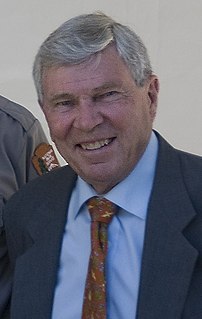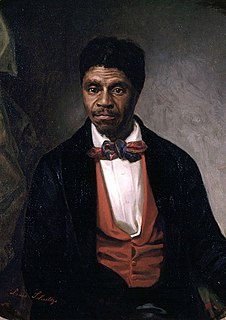
The American Civil War was a civil war in the United States from 1861 to 1865, fought between northern states loyal to the Union and southern states that had seceded to form the Confederate States of America. The Civil War began primarily as a result of the long-standing controversy over the enslavement of Black people. War broke out in April 1861 when secessionist forces attacked Fort Sumter in South Carolina, just over a month after Abraham Lincoln had been inaugurated as the President of the United States. The loyalists of the Union in the North, which also included some geographically western and southern states, proclaimed support for the Constitution. They faced secessionists of the Confederate States in the South, who advocated for states' rights to uphold slavery.

The Battle of Gettysburg was fought July 1–3, 1863, in and around the town of Gettysburg, Pennsylvania, by Union and Confederate forces during the American Civil War. The battle involved the largest number of casualties of the entire war and is often described as the war's turning point. Union Maj. Gen. George Meade's Army of the Potomac defeated attacks by Confederate Gen. Robert E. Lee's Army of Northern Virginia, halting Lee's invasion of the North.

McPherson County is a county in the U.S. state of Nebraska. As of the 2010 United States Census, the population was 539, making it the third-least populous county in the state of Nebraska and the eighth-least populous county in the United States. Its county seat is Tryon. The county was formed in 1890 from Logan County; it was named for Civil War General James B. McPherson.

McPherson County is a county located in the U.S. state of Kansas. As of the 2010 census, the county population was 29,180. The largest city and county seat is McPherson. The county is named for Civil War General James B. McPherson.

The First Battle of Bull Run, also known as the Battle of First Manassas, was the first major battle of the American Civil War and was a Confederate victory. The battle was fought on July 21, 1861, in Prince William County, Virginia, just north of the city of Manassas and about 30 miles west-southwest of Washington, D.C. The Union's forces were slow in positioning themselves, allowing Confederate reinforcements time to arrive by rail. Each side had about 18,000 poorly trained and poorly led troops in their first battle. It was a Confederate victory, followed by a disorganized retreat of the Union forces.

The Confederate States Army, also called the Confederate Army or simply the Southern Army, was the military land force of the Confederate States of America during the American Civil War (1861–1865), fighting against the United States forces in order to uphold the institution of slavery in the Southern states. On February 28, 1861, the Provisional Confederate Congress established a provisional volunteer army and gave control over military operations and authority for mustering state forces and volunteers to the newly chosen Confederate president, Jefferson Davis. Davis was a graduate of the U.S. Military Academy, and colonel of a volunteer regiment during the Mexican–American War. He had also been a United States Senator from Mississippi and U.S. Secretary of War under President Franklin Pierce. On March 1, 1861, on behalf of the Confederate government, Davis assumed control of the military situation at Charleston, South Carolina, where South Carolina state militia besieged Fort Sumter in Charleston harbor, held by a small U.S. Army garrison. By March 1861, the Provisional Confederate Congress expanded the provisional forces and established a more permanent Confederate States Army.

During the American Civil War, the Union Army, also called the Northern Army, referred to the United States Army, the land force that fought to preserve the Union of the collective states. Also known as the Federal Army, it proved essential to the preservation of the United States as a working, viable republic.

James M. "Jim" McPherson is an American Civil War historian, and is the George Henry Davis '86 Professor Emeritus of United States History at Princeton University. He received the 1989 Pulitzer Prize for Battle Cry of Freedom: The Civil War Era. McPherson was the president of the American Historical Association in 2003.

The Army of the Tennessee was a Union army in the Western Theater of the American Civil War, named for the Tennessee River.

There is widespread disagreement among historians about the turning point of the American Civil War. A turning point in this context is an event that occurred during the conflict after which most modern scholars would agree that the eventual outcome was inevitable. While the Battle of Gettysburg in July 1863 is the event most widely cited as the military climax of the American Civil War, there were several other decisive battles and events throughout the war which have been proposed as turning points. These events are presented here in chronological order. Only the positive arguments for each are given.

The Maryland campaign—or Antietam campaign—occurred September 4–20, 1862, during the American Civil War. Confederate Gen. Robert E. Lee's first invasion of the North was repulsed by the Army of the Potomac under Maj. Gen. George B. McClellan, who moved to intercept Lee and his Army of Northern Virginia and eventually attacked it near Sharpsburg, Maryland. The resulting Battle of Antietam was the bloodiest single-day battle in American history.

James Edwin McPherson is an American government official and retired United States Navy rear admiral. He has served as the Acting United States Under Secretary of the Army since July 23, 2019, and was sworn into the position full-time on March 25, 2020 following confirmation by the Senate. He concurrently served as the General Counsel of the Army from 2018 to 2020. He was designated as Acting United States Secretary of the Navy on April 7, 2020, following the resignation of Thomas Modly.

The Battle of Spencer's Ordinary was an inconclusive skirmish that took place on 26 June 1781, late in the American Revolutionary War. British forces under Lieutenant Colonel John Graves Simcoe and American forces under Colonel Richard Butler, light detachments from the armies of General Lord Cornwallis and the Marquis de Lafayette respectively, clashed near a tavern at a road intersection not far from Williamsburg, Virginia.
Virginia v. West Virginia, 78 U.S. 39 (1871), is a 6-to-3 ruling by the Supreme Court of the United States which held that where a governor has discretion in the conduct of the election, the legislature is bound by his action and cannot undo the results based on fraud. The Court implicitly affirmed that the breakaway Virginia counties had received the necessary consent of both the Commonwealth of Virginia and the United States Congress to become a separate U.S. state, and explicitly held that the counties of Berkeley and Jefferson were part of the new State of West Virginia.

This timeline of events leading to the American Civil War is a chronologically ordered list of events and issues which historians recognize as origins and causes of the American Civil War. These events are roughly divided into two periods: the first encompasses the gradual build-up over many decades of the numerous social, economic, and political issues that ultimately contributed to the war's outbreak, and the second encompasses the five-month span following the election of Abraham Lincoln as President of the United States in 1860 and culminating in the capture of Fort Sumter in April 1861.

Paleontology in Washington, D.C., refers to paleontological research occurring within or conducted by people from Washington, D.C.. Local paleontology is known primarily for two serendipitously discovered dinosaur fossils. The first was a vertebra from a carnivorous dinosaur nicknamed "Capitalsaurus" that was related to Tyrannosaurus rex. "Capitalsaurus" is the official dinosaur of the District of Columbia; the place it was discovered was named Capitalsaurus Court in its honor and it even has its own local holiday. The second major fossil find was a thighbone from the long-necked sauropod Astrodon. The District of Columbia and Maryland are the only places where Early Cretaceous dinosaur remains are known to have been preserved east of the Mississippi River.
Gary Dan McPherson was an American college basketball coach. A native of Cass, West Virginia, McPherson led the VMI Keydets for five seasons before working as a West Virginia men's basketball coach for twenty years. He was also the head coach for the Alderson Broaddus Battlers in nearby Philippi for two seasons.
David Watford is a Canadian football quarterback for the Hamilton Tiger-Cats of the Canadian Football League (CFL). He played college football as a quarterback at Virginia for three seasons before transferring to Hampton.
Eric Earl Porterfield is an American politician and a Republican member of the West Virginia House of Delegates, representing District 27, which includes parts of Mercer and Raleigh counties. First elected in 2018, Porterfield is the second blind person ever to serve in the West Virginia legislature. Alongside being known for being a physically disabled politician, Porterfield is also well known for his unwavering opposition to LGBT rights who he compares to terrorists. He is on video expressing what he would do should his daughter or son come out gay, saying he would "see if they knew how to swim" and implying he would drown them. In the June 2020 primary he was defeated in his bid for re-election, coming in last of Republican candidates running.

The Columbia Pike–Farragut Square Line, designated Route 16Y, is a rush hour-only MetroExtra bus route operated by the Washington Metropolitan Area Transit Authority between the neighborhood of Barcroft and McPherson Square station of the Blue, Orange, and Silver lines of the Washington Metro. This line is part of the Pike Ride service, which runs through Columbia Pike. This line provides service to Barcroft in Arlington County, Virginia and McPherson Square in Washington, D.C.


















